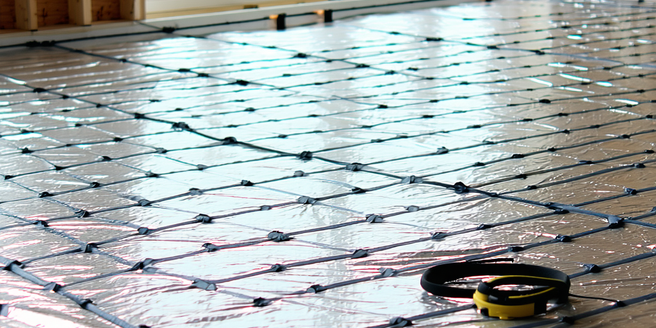Reducing Utility Bills Through Insulation

Understanding the Role of Insulation
| Aspect | Details | Impact |
| Thermal Resistance | Reduces heat transfer | Enhances energy efficiency |
| Soundproofing | Blocks outdoor noise | Improves indoor comfort |
| Moisture Control | Prevents dampness | Avoids mold growth |
| Air Leaks | Seals gaps | Reduces energy loss |
| Durability | Longevity of materials | Lowers maintenance costs |
| Environmental Impact | Sustainable options | Reduces carbon footprint |
Identifying Areas to Insulate in Your Home
Identifying which areas in your home need insulation can significantly impact your energy consumption. The most common places to insulate include the attic, walls, floors, and basements. The attic is often the biggest culprit of energy loss due to rising heat. By adding insulation here, you can prevent heat from escaping in the winter and keep hot air out in the summer. Walls and floors also require proper insulation to create a barrier against temperature variations. Basements, especially if unfinished, can let in cold air and moisture, which can rise to the rest of the home. Additionally, sealing gaps around door frames, windows, and other openings is crucial for a comprehensive insulation strategy. Taking the time to thoroughly inspect these areas will ensure your insulation efforts are as effective as possible, leading to reduced utility bills and a comfortable living environment.
Types of Insulation Materials and Their Benefits
Choosing the right insulation material is vital to maximizing the benefits of insulating your home. Fiberglass is one of the most common materials, known for its affordability and fire-resistant properties. It is typically available in batts, rolls, or loose-fill, making it versatile for different applications. Cellulose, made from recycled paper, is another popular choice due to its eco-friendliness and excellent air sealing capabilities. For moisture-prone areas like basements, rigid foam boards are ideal as they resist water absorption. Spray foam insulation is prized for its ability to reach tight spaces, expand upon application, and provide a high R-value per inch, offering superior thermal resistance. Each type of insulation material brings its distinct advantages, making it important to consider factors like climate, budget, and specific needs of your home when selecting the right one. Investing in the appropriate material can lead to significant energy savings throughout your home’s lifespan.
How Proper Insulation Can Impact Energy Efficiency
Proper insulation is a key factor in enhancing your home’s energy efficiency. By minimizing the amount of heat lost through walls, roofs, and floors, insulation reduces the demand on heating and cooling systems. This means less energy is needed to maintain a comfortable indoor environment, leading to lower utility bills. The effectiveness of insulation is measured by its R-value, which indicates its resistance to heat flow; the higher the R-value, the greater the insulation’s efficiency. Adding insulation can also help manage humidity levels by reducing the infiltration of moist air, further contributing to energy savings. Moreover, well-insulated homes require less frequent temperature adjustments, reducing wear and tear on HVAC systems and potentially extending their lifespan. By investing in quality insulation and ensuring its proper installation, homeowners can make a significant impact on their overall energy efficiency, promoting sustainability and enhancing comfort.
DIY vs. Professional Insulation: Pros and Cons
Deciding between DIY and professional insulation installation depends on various factors, including budget, skill level, and the scope of the project. DIY insulation can be a cost-effective solution for those willing to invest time in learning the techniques required for a successful installation. It offers the flexibility to select materials and work at your own pace. However, DIY may pose challenges, such as ensuring correct R-values, achieving a complete seal, and handling potentially hazardous materials like fiberglass. On the other hand, hiring professionals guarantees expertise and thoroughness, reducing the risk of errors that could compromise energy efficiency. Professionals are also familiar with local building codes and can provide warranty and maintenance options. While this route is generally more expensive upfront, it can result in long-term savings by maximizing the insulation’s effectiveness. Carefully evaluating the pros and cons of each option will guide homeowners in making an informed choice that meets their requirements.
Calculating Potential Savings from Insulation
Calculating the potential savings from insulation requires understanding several factors, including the existing energy consumption, the area to be insulated, and the local climate. A basic tool for this is performing an energy audit, which assesses how much energy your home currently uses and identifies areas for improvement. The anticipated reduction in energy usage can then be estimated by considering the R-value improvement and the efficiency of heating and cooling systems. For instance, homes in regions with extreme temperatures may experience noticeable savings, as opposed to milder climates. Online calculators can simplify this process by providing an estimate based on input parameters, such as insulation type and square footage. Additionally, considering the cost of materials, installation, and any available governmental incentives is crucial to calculating the net savings. These estimates not only offer an insight into potential energy cost reductions but also aid in evaluating the insulation’s return on investment over its lifespan.
Government Programs and Incentives for Insulation
Numerous government programs and incentives encourage homeowners to invest in insulation as part of energy efficiency initiatives. In many regions, grants and tax credits are available to offset the costs associated with purchasing and installing insulation materials. These incentives aim to promote sustainable practices and reduce energy consumption across residential buildings. Energy-efficient mortgages (EEMs) are another financial resource aimed at facilitating home improvements focused on energy conservation, potentially including insulation upgrades. Local utility companies often provide rebates or discounts for homeowners who install insulation as part of broader energy-saving projects. Participating in these programs not only reduces the initial financial burden but also aligns with long-term environmental goals. By taking advantage of such incentives, homeowners can make significant strides in improving insulation affordably, while contributing to a more energy-conscious community.
Common Insulation Mistakes and How to Avoid Them
Avoiding common insulation mistakes can lead to better energy efficiency and cost savings over time. One frequent error is using incorrect R-values, which may result in insufficient thermal resistance or unnecessary expense. Selecting the right material type for each specific area is also crucial; for instance, using moisture-resistant options in damp environments like basements. Poor installation is another common pitfall, often leaving gaps or compressions that reduce insulation effectiveness. It’s essential to cover all areas uniformly and seal any leaks that can permit air infiltration. Overlooking ventilation is another mistake; proper ventilation must be maintained to prevent excessive moisture build-up. Finally, failing to address air sealing can undermine the benefits of insulation, making it essential to tackle both concurrently. Being mindful of these aspects can prevent costly mistakes and ensure your insulation investment delivers maximum energy-saving benefits.
Maintenance Tips for Long-lasting Insulation
Maintaining insulation’s effectiveness over time requires adhering to certain maintenance practices. Regular inspections are crucial to identifying any signs of wear, moisture intrusion, or pest activity that might compromise the insulation’s performance. In the attic, ensure that any vents remain unblocked and that insulation hasn’t shifted, degrading coverage. By checking for drafts around windows, doors, and other openings, you can ensure that seals and weatherstripping remain intact and effective. It’s also vital to control moisture levels within the home to prevent condensation issues, particularly in areas like basements. In some situations, topping up insulation may be necessary to restore full effectiveness due to natural settling over time. A vigilant maintenance routine helps ensure insulation remains optimal, delivering continued savings on energy bills and maintaining indoor comfort. Such practices not only extend insulation’s lifespan but also contribute to overall home health and efficiency.
Evaluating the Return on Investment of Insulation
Evaluating the return on investment (ROI) of an insulation project involves several considerations beyond the initial cost. The primary metric for ROI is the reduction in utility bills, which reflects improved energy efficiency. While specific savings can vary based on factors such as geographic location, home size, and existing energy consumption, industry estimates suggest a substantial decrease in energy expenses post-insulation. Additionally, insulation enhances the home’s resale value and attracts environmentally-conscious buyers, potentially offering a future financial gain. The installation cost, potential for government rebates, and maintenance expenses should all be factored into the ROI calculation. Furthermore, the non-monetary benefits, such as increased comfort, reduced carbon footprint, and enhanced indoor air quality, add intangible value. By weighing these elements, homeowners can determine if the insulation investment aligns with both their financial goals and environmental commitments. The long-term benefits often make this home improvement project a wise and sustainable choice.
